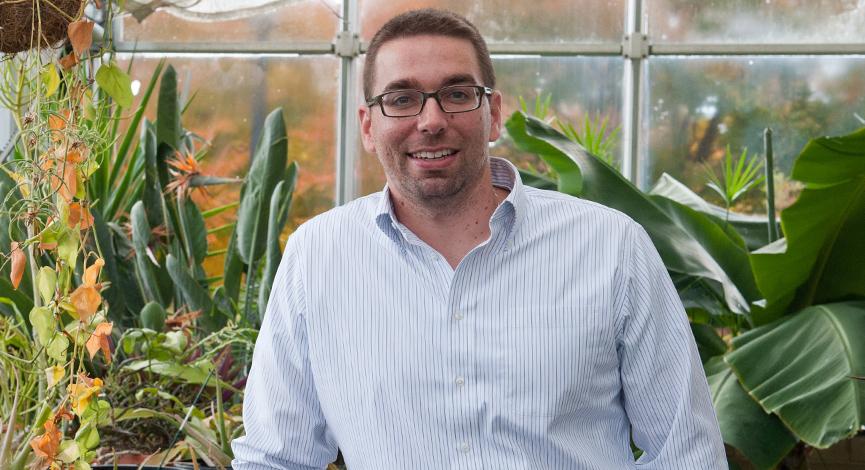
Dr. Mark Mitchell’s passion for green architecture is coming to life – literally.
Along with faculty from Kent State University and the University of Cincinnati, Heidelberg is now part of a new coalition to support landscape architecture research and implementation. Titled the Greater Ohio Living Architecture Center, the group is dedicated to the study of integrating plants and living systems within buildings as designed ecologies.
Essentially, Heidelberg, KSU and UC will rotate hosting conferences to share research, design, policy work and training with each other and the landscape architecture industry, Mark explained. Through the collaboration, the partner institutions will explore applications and best uses for features such as green walls and roofs.
Green roof ecology has been a passion of Mark’s for years. In fact, it was the topic of his doctoral dissertation and led to the development of the coalition through colleagues at KSU and UC. He is serving as Heidelberg’s liaison. Colleagues Dr. Amy Berger, professor of geology, and Dr. Laura Johnson, director of the National Center for Water Quality Research, are associate faculty in the center, and will contribute to its research and teaching activities.
So what does all of that mean for students? Coming soon, those who share Mark’s interest will have an opportunity to participate in the design and eventual creation of Heidelberg’s first green roof.
“We’re going to start small,” Mark said. Heidelberg’s first green roof will be located on the second floor of Saurwein Health & Wellness Center, a roughly 10-foot by 20-foot space overlooking Hoernemann Stadium.
To start, students will be involved with Mark in researching the potential design and types of plant species and soil that will have optimal success on the roof and provide food and habitat for imperiled pollinators. Students in his Intro to Environmental Science and Ecology classes will be involved in the process as well as students from the Greenhouse Club who share his interest. “We are really excited about this opportunity,” he said.
For now, Mark and the students are researching and working to set up the systems but they’ll have to wait for the spring for the actual planting. Once in place, the plants and soil actually will provide benefits you may not have considered: By protecting the roof from the freeze/thaw cycle, its life can be extended and they will provide an additional measure of insulation for the building while improving aesthetics. When they take root, the plants will be low maintenance, Mark explained.
There’s another potential area of study that ties in with the National Center for Water Quality Research; students will be able to study green roof systems and water runoff.
Equally as valuable, Heidelberg students will have opportunities to present their own research and network with faculty and students from other institutions in an academic conference setting at the conferences.